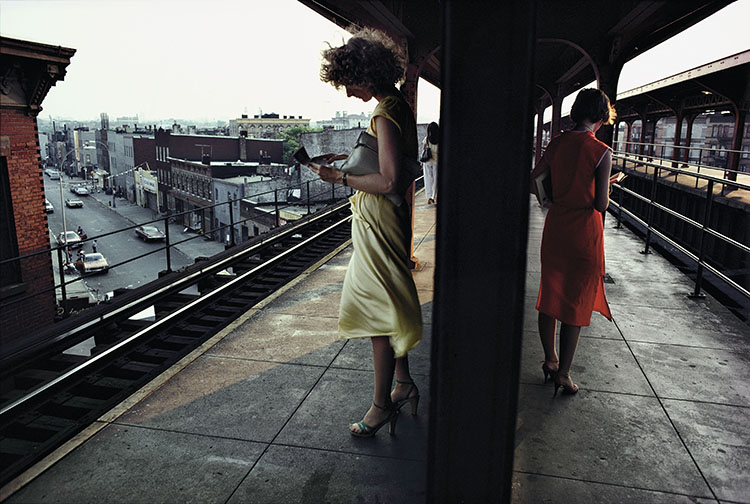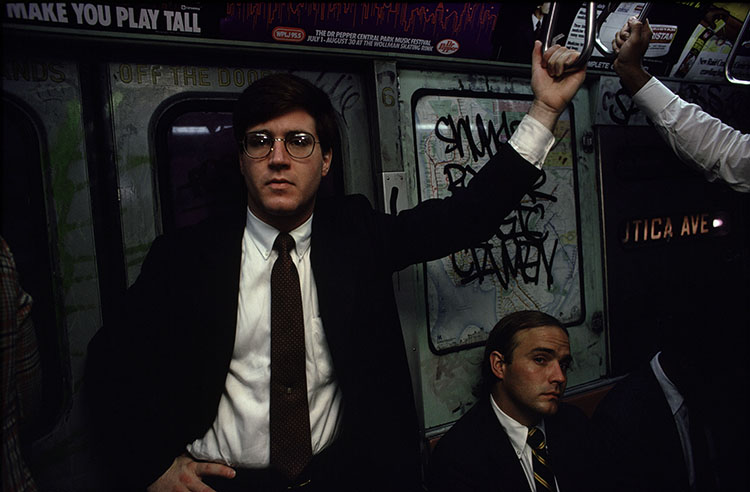
By Rowanne Reifman

SAN DIEGO — Picture yourself taking the New York subway in the 1980s. You’re in a cramped subway car with your shoulder hitting the person next to you, claustrophobia creeping in. The heavy graffiti heightens how grimy it feels to be on the subway, and the smell only makes it worse. Not only that, but there may be other passengers who make you feel a little uneasy. You hope your stop is close, when suddenly a bright flash catches your eye, and you look to your right to see a man taking pictures of strangers in the car with you. While it may be weird to imagine someone taking photographs of others in the subway, Bruce Davidson did just that and more throughout his artistic career.
Davison, born in 1933 in Oak Park, Illinois, got into photography when he was just ten years old. He was given his own camera on his Bar Mitzvah for his 13th birthday. When he was older he attended Rochester Institute of Technology and Yale University, continuing his study of photography. Bruce Davison’s photographs focused on people that were typically “outsiders” of society, ranging from widows, to circus clowns, to going as far as living with an infamous Manhattan gang for three years, photographing their everyday life.
But why did Davidson choose subjects who were considered to be “odd” or “dangerous”? Coming from a Jewish background, Davison was no stranger to what it felt like to be considered an outcast from society or “different.” This sympathy he had for others is what drew him to certain groups of people and would later inspire his Subway series, where he focused on human connections and the value that we place upon each other.
When observing a photo of two women at a train platform, many different emotions may overcome a person. One may feel loneliness or desire to reach out and talk to the two women. At first glance it may also seem that the photo is fairly recent, as the two women are looking down at something which we might assume is their phones. However, when taking a closer look, it becomes clear that they are both looking down at a book or pamphlet of some sort. The two women are so close they could talk to one another, yet they look down at what they’re reading, the pole in the middle of the picture only separating them farther apart. When we circle back to the idea of human connections and this photograph, we begin to see why Davidson had created this series, and why it is important to look up every once in a while. While the two women are close to each other, they are practically alone. What would happen if the two women spoke to each other, and what kind of connection would they form?

Another beautiful photograph he took on the subway was one he compared to a Japanese painting, with the graffiti acting as the large brushstrokes and the subject in the very middle. Japanese paintings are often very beautiful, and when he compares this photograph to one, he is possibly suggesting that the Subway too, while it may be grimy and unsafe at times, can also be a beautiful place, as it is something all people in New York City share in common.
If we can learn anything from this series and Bruce Davidson, it’s that everyone has value. Sometimes we are too quick to judge and too unwilling to understand one another. What if we looked at the world the way Davidson does, in an open-minded, sympathetic way? During the pandemic we all learned that the connections we have with one another are important, and even more important are the things we can learn from one another, if we only took the time to listen.
Seventeen pieces from his Subway series are on display at the San Diego Museum of Art through December 3rd.
*
Rowanne Reifman is an entering freshman at San Diego State University, whose interests include journalism and art history.